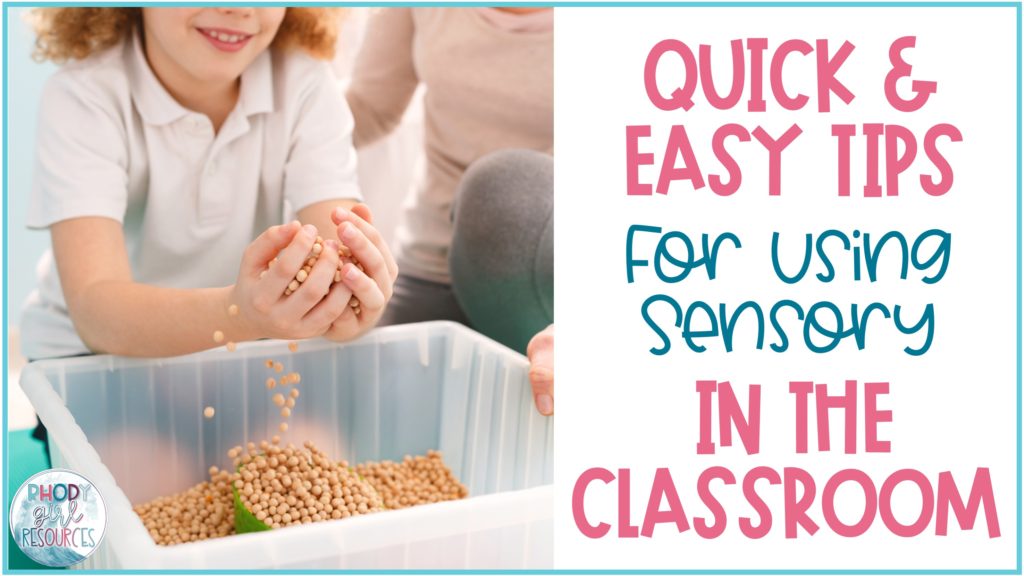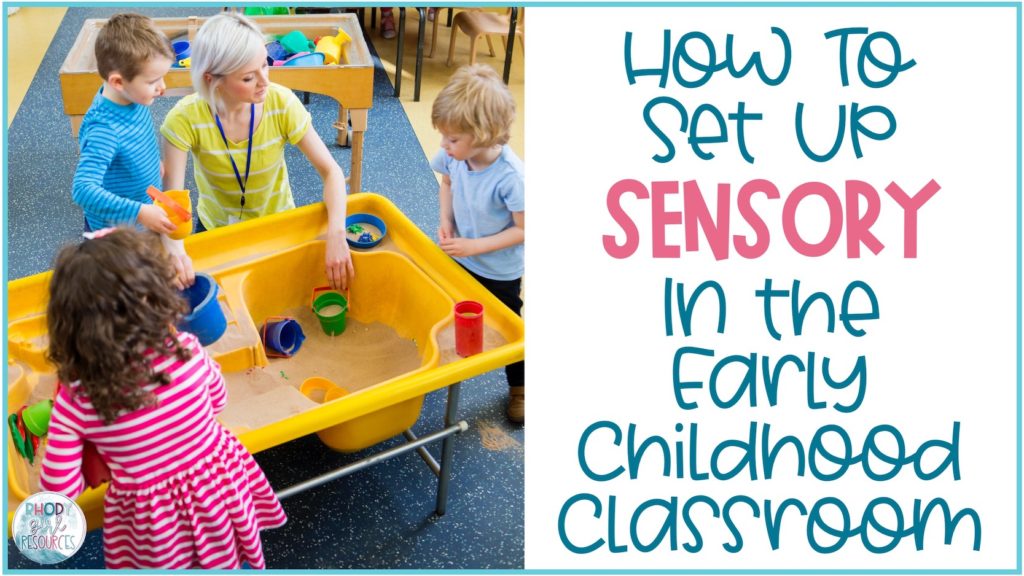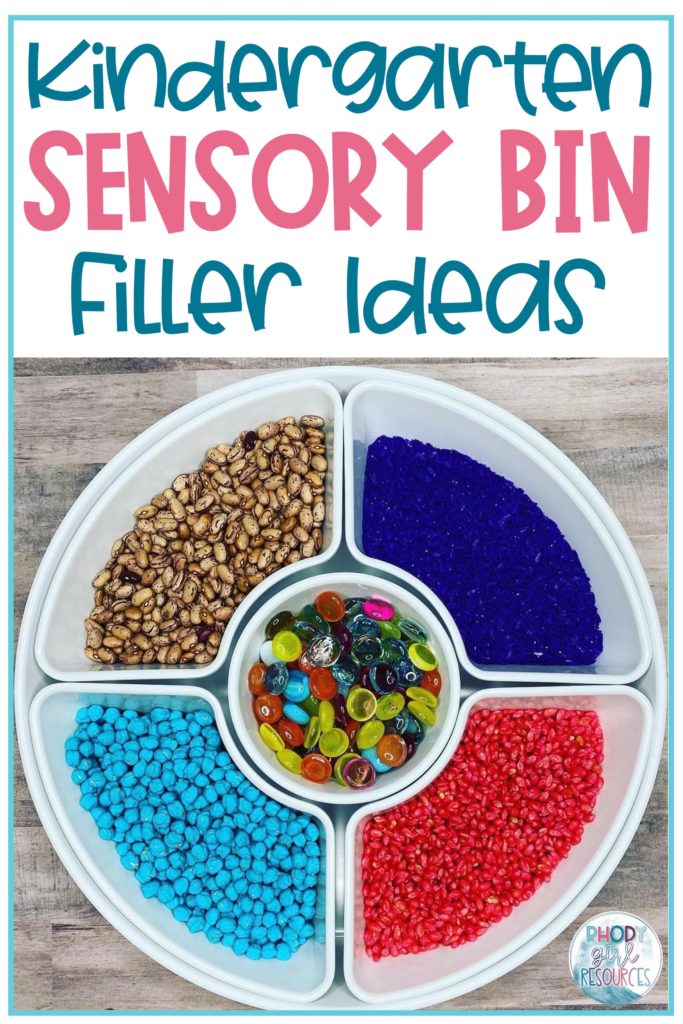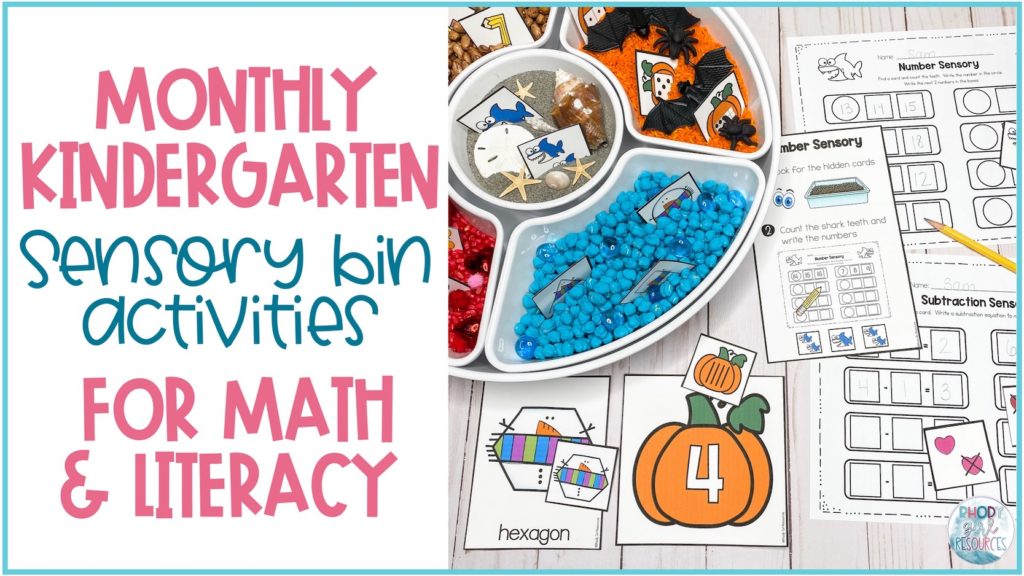When you first think about starting sensory in the classroom, it can be overwhelming. I am sure many questions instantly run through your mind about where to begin and what to use. Let’s break it down so you can see how simple using sensory in the classroom can be and the benefits it will have.

Why is Sensory Play Important?
Every person has senses. The ones we often teach our students and focus on are touch, smell, taste, sight, and hearing. When students use these senses during an activity or lesson, it is a sensory activity.
Sensory activities are important because they benefit children in many ways. When students participate in sensory activities, it helps to stimulate the brain. Sensory in the classroom also encourages exploration and invokes curiosity. While participating in sensory activities, students also focus on social skills, problem-solving, and coordination.
Setting up Sensory in the Classroom
There are many different ways to integrate sensory in the classroom. To begin using sensory in the classroom, you need to choose some type of container, a filler, and the purpose of the sensory activity.

What to Use for Sensory in the Classroom?
Sensory bins, tubs, and tables are all different container options. First, ask yourself a few questions to help determine what will work best for you.
- How much space do I have or want to use for sensory activities?
- How many students do I want to use a sensory activity at once?
- Do I need to be able to store the sensory activity when it is not in use?
With limited space, a sensory bin or sensory tub is a better option. Plus, if you are like me, you definitely have a variety of containers already within your classroom. Any medium to large size container will work for creating a sensory bin. I prefer Sterilite Large Clip Boxes because they have a lid and are easy to store. On the other hand, if you have an area you want to use for sensory centers consistently, a sensory table may be what you are looking for. My favorite sensory table is the Ikea Flisat. This table is affordable, a decent size, can hold two sensory bins, and also serve as a regular table when not in use.
What to Use in Sensory Bins for Kindergarten?
Once you have determined what will hold the sensory materials, you are ready for sensory bin filler ideas! There are many different options for sensory fillers. Best of all, many of these sensory bin materials may already be lying around your home or classroom. Here are a few of my favorite sensory bin fillers:
- Rice
- Beans
- Chickpeas/Garbanzo Beans
- Aquarium Rocks
- Pom Poms
- Sand/Salt
- Shredded Paper
- Corn Kernels
- Water Beads
- Pasta

Mix and match to change things up. Choose a base such as rice, and then add pom poms and feathers for different textures. You could also throw in some classroom manipulatives, small toys, etc. Even better is with liquid watercolor or acrylic paint, you can change the color of many sensory bin fillers, making them easy to reuse.
Sensory in the Classroom Activities
Sensory activities are also a great way to integrate play and learning for students. I like to use themed sensory bins in my classroom. During center time, I just want students to play and explore the bin. In sensory center activities, I place items that would encourage conversation, build vocabulary, and fuse with what we may be learning in science or social studies.
I also love to integrate sensory activities for kindergarten into our kindergarten literacy centers and kindergarten math centers. Each week one of my academic centers is always a sensory bin activity. First, create a sensory bin with the sensory filler of your choice. Then mix in cards focusing on skills you are learning and want your students to practice to create math sensory bins or literacy sensory bins.

If you want to start with sensory in the classroom immediately but don’t want to take the time to create sensory center activities, I have done the work for you. Check out these monthly sensory bins activities focusing on kindergarten and first grade standards. Choose your sensory filler, add the printed cards, and your students are ready to play and learn!









